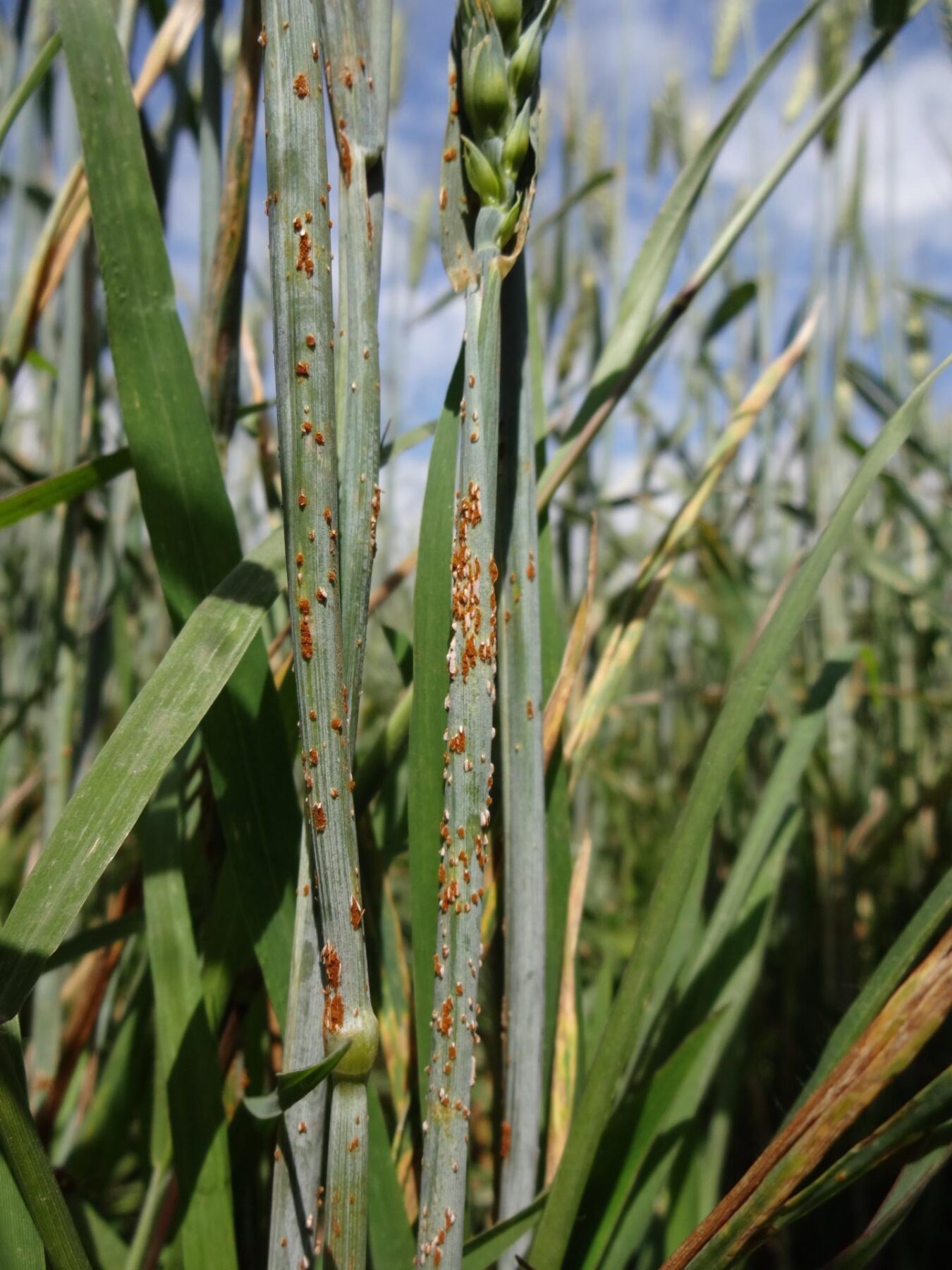
Termitomyces mushrooms growing from termite nest
(credit: This image was created by user Candice (Candice) at Mushroom Observer, https://creativecommons.org/licenses/by-sa/3.0, via Wikimedia Commons)
Termites have cultivated and eaten them for 30 million years. This incredible mushroom has more protein than chicken, soy and corn, but has yet to be grown by humans. By imitating termites, scientists at the University of Copenhagen will investigate whether these mushrooms can become a sustainable food source for humans.
Termites are more than pests. In fact, in Africa and Asia, termites have been advanced fungal farmers for 30 million years. As something quite unique in nature, they cultivate fungi just for food. And through evolution, they have optimized their mushrooms to become an ideal food source.
“Generally, mushrooms are a good source of protein – and we need sustainable protein alternatives to meat. However, relatively few types of edible mushrooms are on the market today – with the ones that are, primarily grown because they are easy to cultivate, not because of their nutritional and health value. Here we have a mushroom that has already been naturally optimized to be an ideal food source for animals, meaning that it is also high in qualities as a human food source,” says Professor Michael Poulsen of the University of Copenhagen’s Department of Biology.
Poulsen and a group of research colleagues will now get to work on finding out what takes to get Termitomyces mushrooms into production as human food source, i.e., without the intervention of the termites. To do so, Professor Poulsen has just been awarded a grant from Independent Research Fund Denmark.
Farming fungi with their feces
Termitomyces fungi live in a symbiotic relationship with their termite hosts. In short, termites collect, then munch on dead plant materials such as leaves, wood and grass, which pass through their intestines in a semi-digested state before being excreted into the termite nest.
There, in specially designed chambers with carefully regulated temperature and humidity, the termites tend to their fungal farms. As the termites spread their feces over the fungus, plant material is broken down, allowing the fungus to grow. Finally, the termites consume the fungus as their only food source.
But these fungi don’t just feed termites. Once a year, they sprout monstrous mushrooms that are collected and sold as an expensive delicacy in Chinese markets and rural areas of Southeast Asia and Africa, where they are an important food source. Which makes good sense, as Poulsen explains:
“These mushrooms contain more protein than chicken and plants such as soy, corn and peas, have a better amino acid composition and also contain a wide range of healthy vitamins. Nutritionally, they are at the high end – and they even taste good. But for now, as they cannot yet be cultivated in the absence of termite hosts, their availability as a human food source is limited.”
Recreating termite nest conditions
The research project will embark on two paths:
“For now, we can grow fungal mycelium on a small scale, but without mushrooms. We’ll see if we can scale up production to the extent that it becomes profitable. The idea is to cultivate the fungi on leftover plant substrates. In Denmark, this could be wood chips or straw that would otherwise be burnt. Here, we might be able to convert some of this material into fungal biomass, for human or agricultural animal consumption,” explains Michael Poulsen.
Concurrently, the researchers will investigate what is needed to coax mushroom growth.
“The other path we’ll be taking is to understand the natural processes involved as these mushrooms emerge. We will try to recreate the same conditions present in a termite colony – with regards to temperature, humidity, CO2, composition of plant biomass, etc. At the same time, we’ll look at which genes are expressed in the fungi as mushrooms are produced. If we can understand their biology better, we will be better equipped to mimic the conditions needed by mushrooms in the laboratory,” says Michael Poulsen.
Professor Poulsen points out that the production of Termitomyces mushrooms would first and foremost have high market value as an alternative protein source. Furthermore, large-scale production could have a positive impact on local economies in parts of the world where these fungi already grow naturally, but where their collection is restricted to termite colonies.
Original Article: Learning how to grow super mushrooms, with termites as teachers
More from: University of Copenhagen
The Latest Updates from Bing News
Go deeper with Bing News on:
Termitomyces mushrooms
- Legend of Mushroom Codes (May 2024)
After some Legend of Mushroom codes? This new mobile RPG has just released, and there are already plenty of rewards available via coupons. If you’re just starting out and want some boosts ...
- Top 8 Best Mushroom Extract Supplements in 2024
The popularity of mushroom extract supplements has grown significantly lately due to the potential health benefits they offer. These supplements are made by isolating bioactive substances from ...
- Top 6 Best Mushroom Supplements for ADHD in 2024
The use of mushrooms in traditional medicine is rooted in their myriad health advantages. The uptick in natural supplement enthusiasm has further fueled their popularity, especially their ...
- Microdosing Magic Mushrooms: Here's What the Health Experts Have to Say
Collage: Cassie Basford. Reviewed by Dietitian Maria Laura Haddad-Garcia “Shrooms,” also known as magic mushrooms, are a popular hallucinogenic drug that has been used recreationally for ...
- Finding early morel mushrooms is underway
A good find of morel mushrooms on Sunday with the Sunday Sun-Times as a time marker. Ryan Leonard Ryan Leonard found morels in the past week, noting, “I think they were the earliest I have found ...
Go deeper with Bing News on:
Mushroom alternatives to meat
- What To Use When You Don't Have Egg Noodles For Beef Stroganoff
Did you realize you don't have any noodles halfway through preparing beef stroganoff? Don't worry! There are plenty of substitutions you can make.
- Fresh Direct Launches Mushroom Meat
Mushroom meat is made from the stalks of mushrooms that would otherwise be discarded, as only the caps are required for standard mushroom products. Rather than waste the stalks, Fresh Direct has ...
- Fresh Direct launches new mushroom meat alternative to tackle waste
Fresh Direct has launched a new mushroom-based product to be used as greener alternative to meat. The mushroom ‘meat’ product is made with mushroom stalks that would otherwise be discarded, thus ...
- CEO Statements: Revo Foods & Kynda Biotech on Mycoprotein, the Vegan Meat of the Forest
Both companies specialise in alternative products based on mycoproteins and see it as the future of meat alternative products. Mycoprotein is becoming ...
- 7 mushroom recipes to showcase the magnificent family of fungi
Borrowing a method typically applied to chicken, the press-and-sear technique “results in crispy mushrooms with a tender, juicy — and not rubbery — interior,” Food and Dining editor Joe Yonan wrote.










